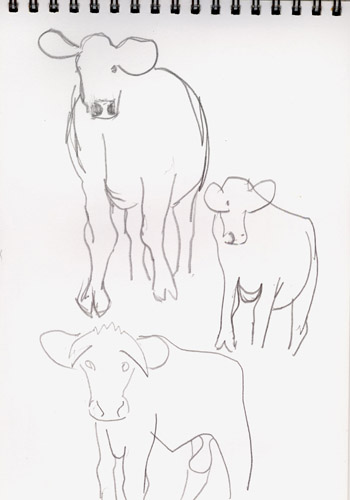 John Foster
John Foster
Commentary - Cattle Sale

1978, Oil on hardboard, Length 9.6m, Height 2.4m
A cattle auction
In a rural district the buying and selling of cattle is an important event. Large sums of money change hands, decisions that will affect the coming farming year are made in seconds, and it is a rare opportunity for social exchange.

Outdoor cattle auction
Except for an occasional head nod or the raising of a finger as they bid on the cattle there is no obvious sign that the buyers are interested. The cattle mill around the arena looking nervous. Each pen of cattle takes about two minutes to sell, then the cattle are let out the exit doors and another pen of cattle enters.
-- paraphrased from John Foster

John took initial sketches during one day attending the Kauri sale, and from these an outline of the mural was made.
This was the first of John’s murals that was painted with the intention of creating a mural. Where the previous murals were painted on separate small panels and joined together, the Cattle Sale was painted on whole sheets of hardboard.
The sheets were butted together, and as one sheet was finished it was moved to the left. The second sheet was then butted next to it, so that the paint could match across the mural continuously. John could only fit two panels beside each other in his Mangawhai Heads workshop.

Painting the mural as a complete work allowed John to change the formal structure of the mural as it progressed from left to right.
The first panel is divided into ten equal sized rectangular panels with a scene in each.
In the second panel the configuration of the individual scenes varies – some are smaller than others, and the lowest scene extends across the whole sheet.
In the third panel, overlapping of some of the scenes occurs, and the hands and arms of the auctioneer begins to extend out through the borders of the scene.
Further right the individual scenes are different shapes and sizes, with people’s arms and the cattle heads and ears overlapping other scenes. The colours are stronger and freer than previously.
Series also includes:
- 55 print editions

Cattle Sale mural at exhibition